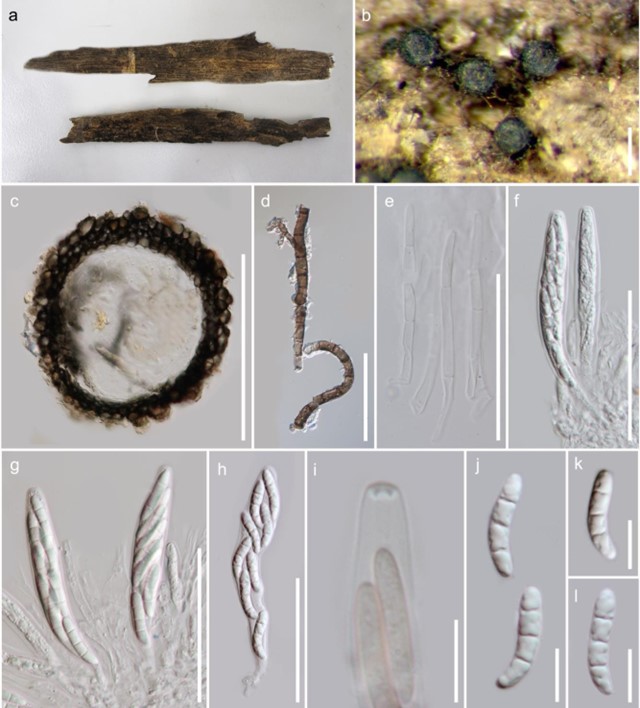Chaetosphaeria Tul. & C. Tul., Select. fung. carpol. (Paris) 2: 252 (1863)
MycoBank number: MB 970; Index Fungorum number: IF 970; Facesoffungi number: FoF 01140; 107 morphological species (Species Fungorum 2020), 50 species with sequence data.
Type species – Chaetosphaeria innumera Berk. & Broome
Notes – Species of the genus are characterized by black ascomata with surface smooth or covered by setae, 8-spored asci, with a small, distinct, refractive, J-, apical ring and septate, hyaline ascospores (Maharachchikumbura et al. 2016b, Fernández et al. 2006). The asexual morph of Chaetosphaeria is hyphomycetous with macronematous or mononematous conidiophores, monophialidic or polyphialidic, conidiogenous cells, aseptate to multi-septate, guttulate or eguttulate conidia, with or without appendages (Maharachchikumbura et al. 2016b, Fernández et al. 2006). Chaetosphaeria species are saprobes on decaying plant material in terrestrial and freshwater habitats (Fernández & Huhndorf 2005, Perera et al. 2016b, Atkinson et al. 2007). The sexual morph of Chaetosphaeria jonesii is illustrated (Fig. 68).

Figure 68 – Chaetosphaeria jonesii (Material examined – THAILAND, Chiang Mai Province, on decorticated wood, 5 August 2015, S. Boonmee RHP 121, MFLU 16-1020, holotype). a Herbarium material. b Appearance of ascomata on host substrate. c Section of ascoma. d Setae. e Paraphyses. f-h Asci. i Close up of apical ascus in Melzer’s reagent. j-l Ascospores. Scale bars: b = 200 µm, c = 100 µm, d-h = 50 µm, i-l = 10 µm.
Species
Chaetosphaeria innumera
